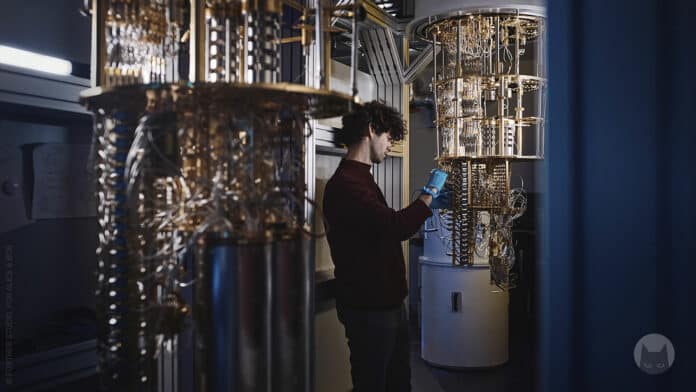Quantum computers are a fascinating advancement in computing technology that uses quantum bits or qubits to store and process information. Qubits can exist in both states simultaneously, unlike digital bits used in conventional computing, which exist as zero or one.
Entanglement, which is a quantum mechanical linking of qubits, gives quantum computers computing capabilities that have not been observed in classical computers. This allows quantum computers to carry out complex calculations in a relatively short amount of time.
However, the trade-off is that the rapid pace of calculations may lead to errors that must be rectified. This has been a major hurdle in the adoption of quantum computers.
Quantum low-density parity-check (qLDPC) codes are a promising construction for drastically reducing the overhead of fault-tolerant quantum computing architectures. However, all of the known hardware implementations of these codes require advanced technologies, such as long-range qubit connectivity, high-weight stabilizers, or multi-layered chip layouts, making it difficult to implement them in practice.
To address this issue, US-based hardware developer Alice & Bob, in collaboration with the research institute Inria, announced a new quantum error correction architecture – low-density parity-check (LDPC) codes on cat qubits – that could greatly reduce the hardware requirements for useful quantum computers.
The technology advances previous research on LDPC codes by enabling the implementation of gates and short-range connectivity on quantum chips. This breakthrough can significantly reduce the overhead required for quantum error correction, allowing the operation of 100 high-fidelity logical qubits with as little as 1,500 physical cat qubits while maintaining an error rate of just 10-8.
“This new architecture using LDPC codes and cat qubits could run Shor’s algorithm with less than 100,000 physical qubits, a 200-fold improvement over competing approaches’ 20 million qubit requirement,” said Théau Peronnin, CEO of Alice & Bob. “Our approach makes quantum computers more realistic in terms of time, cost, and energy consumption, demonstrating our continued commitment to advancing the path to impactful quantum computing with error-corrected, logical qubits.”
Cat qubits alone can lead to logical qubit designs that require significantly fewer qubits. This is because they are inherently protected from bit-flip errors. Alice & Bob and CEA researchers had previously demonstrated in a paper that it would be possible to run Shor’s algorithm with 350,000 cat qubits, which is a 60-fold improvement over the state-of-the-art.
Furthermore, LDPC codes are a type of efficient error correction codes that reduce hardware requirements for correcting errors that occur during information transfer and storage. The latest research shows how using LDPC codes on a cat-qubit architecture could reduce the qubit footprint of a fault-tolerant quantum computer. Additionally, this breakthrough overcomes two key challenges for the implementation of quantum LDPC (qLDPC) codes.
Alice & Bob recently announced the tape out of a chip that would encode their first logical qubit prototype, Helium 1. With the use of the cat qubit LDPC code technique and logical qubits that have a low error rate, Alice & Bob could harness the computing power of 100 logical qubits with just 1,500 physical qubits, enabling them to run fault-tolerant algorithms.
This is an exciting development as leading superconducting quantum computing manufacturers like IBM currently offers up to 1,121 physical qubits. With Alice & Bob’s new architecture, it’s possible to outperform classical computers in the simulation of quantum systems, achieving quantum supremacy using current hardware capabilities.
“Over 90% of quantum computing value depends on strong error correction, which is currently many years away from meaningful computations,” said Jean-François Bobier, Partner and Director at the Boston Consulting Group. “By improving correction by an order of magnitude, Alice & Bob’s combined innovations could deliver industry-relevant logical qubits on hardware technology that is mature today.”
